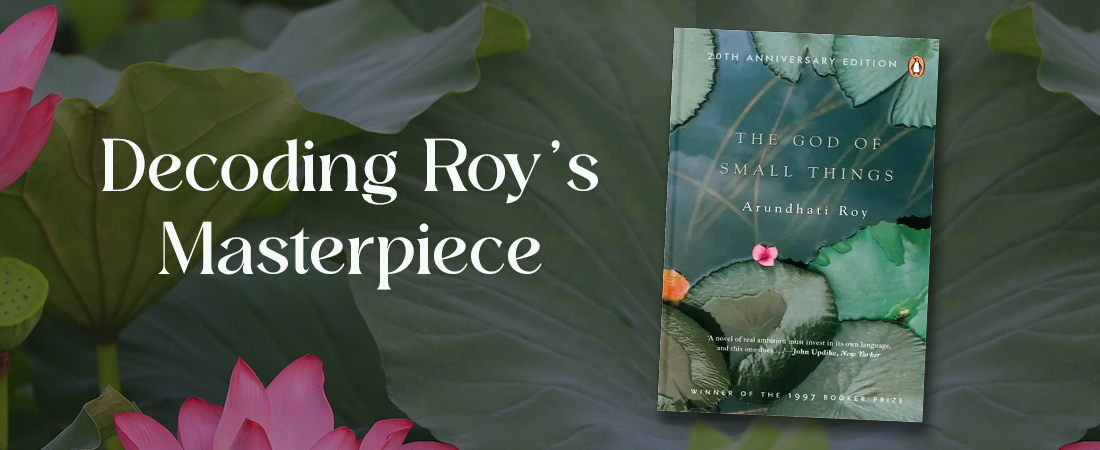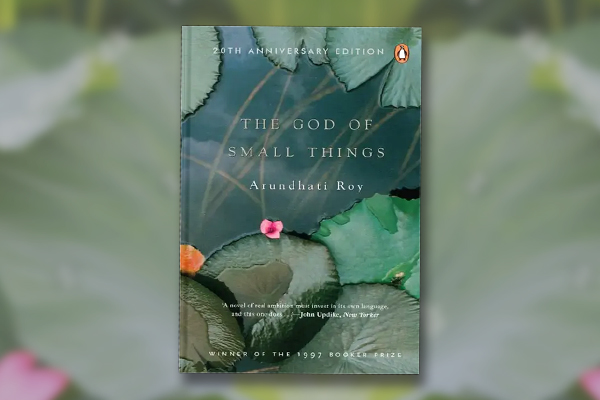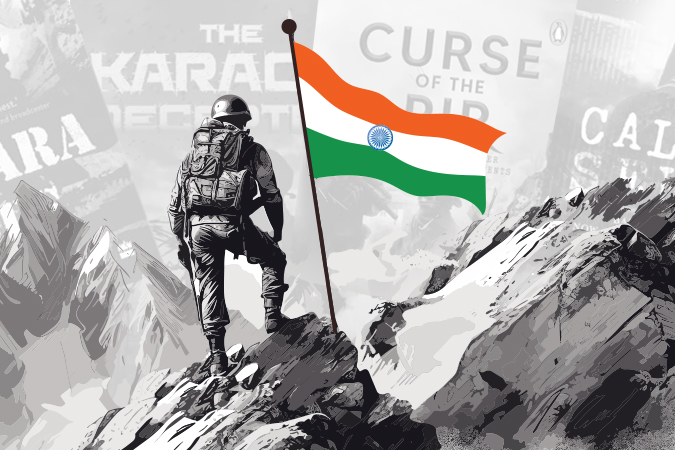
From the moment Arundhati Roy’s debut novel burst onto the literary scene, it was nothing quite like what anyone had read before. Rave reviews, awards and much fanfare followed. Interestingly, the book continues to feature on bestseller lists and frequently comes up in recommendations for must-read books in Indian literature. So, if you’re curious about the book that was published in 1997, you’re in the right place! In this article you’ll find The God Of Small Things summary, analysis and what fans Roy’s literary superstar status. Simply put, read on to find out why this book still matters.
Hailing from Kerala, India, Arundhati Roy was trained as an architect and worked in filmmaking before turning to fiction. Her first novel, The God of Small Things, published in 1997, earned immediate global attention and won the Booker Prize that same year.
Roy’s later career shifted towards essays, activism, and political commentary. Yet, it’s her debut novel that remains her landmark work.
Her other popular works include The Ministry of Utmost Happiness (fiction), Azadi (non-fiction) and her recently released memoir Mother Mary Comes To Me.
The Setting and Context
Set in the small town of Ayemenem in Kerala (modelled on the real village of Aymanam), the novel opens with the adult twins Rahel and Estha returning to their childhood home, many years after a devastating event. The story is time-shifting and non-linear, drifting between 1993 and 1969, memory and present, childhood and adulthood.
The Story in Short: The God Of Small Things summary and analysis
The key events are as follows:
- Rahel, now 31, returns to Ayemenem, a place she hasn’t seen in decades after being separated from her twin brother Estha for 23 years.
- We are then taken back to 1969, when 7-year-old Rahel and Estha live with their mother Ammu, grandmother Mammachi, great-aunt Baby Kochamma, and their uncle Chacko.
- A summer cousin, Sophie Mol, visits from England and that visit triggers a chain of tragic, irreversible events.
- The forbidden affair between Ammu and Velutha, an “untouchable”, lies at the heart of the novel and reveals how the “small things” – subtle gestures, silences, social rules – snowball into a catastrophe.
In short, the novel is about how “small things” like simple decisions, social rules, childhood innocence and trauma reverberate decades later.
The Characters
- Rahel & Estha — twin whose lives are shaped by memory, trauma, separation and the unspoken.
- Ammu — their mother, once married to a man from a higher caste, divorced, and fighting social constraints.
- Velutha — the charismatic, skilled Paravan (untouchable) whose relationship with Ammu breaks caste rules and helps reveal the “small things” motif.
- Baby Kochamma — the great-aunt, ex-nun, full of bitterness and social ambition.
- Chacko — Ammu’s uncle, a Marxist in theory, a baron in practice, with complicated relationships.
- Mammachi — the grandmother, the matriarch of the family’s pickle-and-jam business, representing tradition and expectation.
Language, Structure, and Style
Arundhati Roy’s writing is lyrical, playful, and bold. Her structure is non-linear and memory-driven rather than strictly chronological. She layers Malayalam words, Indian sensibility, vivid nature imagery making the novel read almost like poetry. But this style is not for everyone; some readers may find the style exhilarating or dense.
The Book That Changed Everything
Reception and Reviews
Upon publication, the novel became a literary sensation. It won the Booker Prize in 1997 and instantly placed Arundhati Roy in the global spotlight. Critics praised its voice “a voice of breathtaking beauty… a masterpiece”.
At the same time, not everyone was wholly positive: one previous Booker judge called the novel “execrable”, and some critics labelled it “profoundly depressing”. There was also an obscenity case filed against Roy in Kerala for the explicit descriptions of the sexual relationship between the characters Ammu and Velutha.
Impact and Legacy
The novel opened many doors for Indian English fiction, for voices outside the usual literatures of the West, for writing that mixes regional specificity with universal themes. It remains widely read, taught and discussed.
Roy’s debut created momentum, but she soon changed course into activism and nonfiction. Its impact is only deepened by how fresh it still feels because of the issues of caste, class, gender, memory that still remain relevant issue today.
A combination of lyrical brilliance + social truth + emotional depth made the book stand out from the stories that were coming out of India.
FAQs
Q: What is The God of Small Things about in short?
A: It’s the story of twins Rahel and Estha in Kerala whose childhood is shattered by family secrets, social rules and tragedy, and how small moments shape their lives.
Q: Who wrote The God of Small Things?
A: Arundhati Roy.
Q: Why is The God of Small Things so famous?
A: Because it won the Booker Prize in 1997 and introduced an unforgettable voice. It offered rich Indian storytelling that combined poetic style with social commentary to a global audience.
Q: What is the main message of The God of Small Things?
A: What appears small like a glance, a rule broken, or a childhood memory often carries immense power, shaping lives, histories and social structures.





